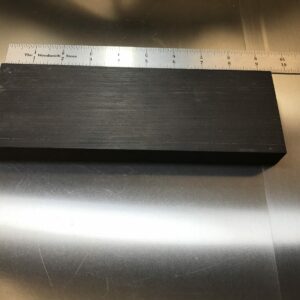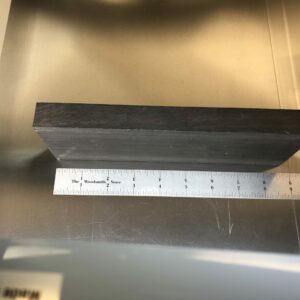I was given a piece of wood (pictures attached) by a friend who had been given it several years ago by a humidor maker who was closing down his shop.
The wood is very dense, uniformly black, and appears to have very fine grain. It doesn’t float in water.
I wonder if it might be ebony. If so I would appreciate advice on working with it.
I have found one article on FWW that talks about the challenges and health risks of working with ebony.
I am a hobbyist woodworker who makes small boxes. I don’t want to waste this small piece in trial and error if it indeed is ebony.
Thanks in advance for opinions and advice.
Russ
















Replies
Hard to tell from the pictures but if it’s perfectly black with no discernable growth rings it is ebony. If you can see a texture in the grain, it could be Grenadille, also called Mozambique Ebony , it is not ebony but from the Rosewood family.
Thanks. There are no growth rings evident in the end grain and it is perfectly black.
Looks like ebony, but it's hard to tell from a picture. Ebony is dense as heck, but pretty brittle.
Could be a VERY dark piece of Wenge. I've never worked with Ebony so can't say - @mikaol sometimes hangs on the forum and he does ...a lot - I'd wait for his opinion
Another possibility for dense and uniformly black wood is African Blackwood - the stuff often used by musical instrument makers, especially in the manufacture of clarinets.
If so, it can be worked relatively easily and is more forgiving than many ebonies - although it is brittle to a degree, so should be worked with sharp edges and generally without the sort of heavy tool impacts involved with operations such as mortising with a chisel. Even a table saw blade can induce some fractures if the feed rate is too high or the teeth have gone a little blunt.
Lataxe
African Blackwood is Mozambique Ebony, I have resawn dozens of short logs to salvage pieces for a guitar luthier. It took 3 bandsaw blades that each ended-up breaking once dull and overheating. The dust is fine and feels like breathing black pepper. Workability with carbide tipped tools was good and it polishes like stone. I used scraps to make cutting knives for kids in the kitchen, it will hold an edge better than common hardwoods .
Hi guys,
I need a help to identify this piece. I am not really good at this but definitely hardwood. Thanks ;)
Just a guess but I would say red elm.
Based on the advert it is Acacia or Ash...
Honey Locust?
This forum post is now archived. Commenting has been disabled